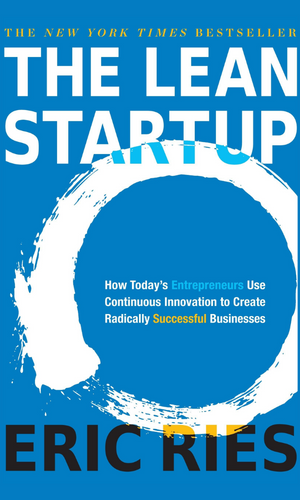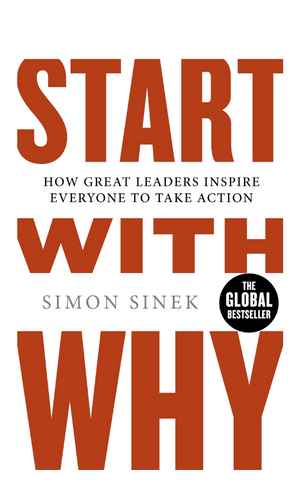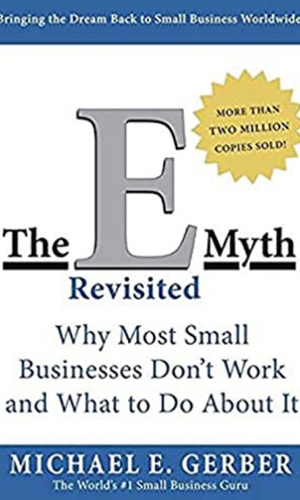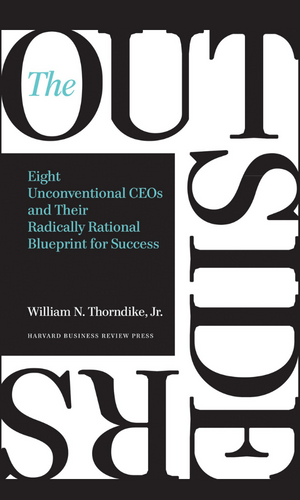Business books for entrepreneurs are a great resource for anyone looking to start or grow a business. Entrepreneurs can use these books to navigate the often-difficult business world and gain valuable insights, advice, and strategies for success. Here we have a list and summary of some books that will help you to expand your business strategies.
List of Books
“The Lean Startup” by Eric Ries

Eric Ries’ book “The Lean Startup” provides a framework for quickly and effectively developing and testing new business concepts. The book focuses on “lean” entrepreneurship, which involves testing and validating business concepts using a minimum viable product (MVP) before investing significant resources in them.
Ries says that traditional business planning can be a waste of time and money that doesn’t take into account the unpredictability and uncertainty of the startup world. Instead, he advocates for a method that is more iterative and adaptable, enabling business owners to quickly gather feedback and adjust their business models.
The “build-measure-learn” feedback loop, which entails developing a minimum viable product (MVP), collecting customer data, and utilizing that data to make educated decisions regarding the direction of the business, is one important concept in “The Lean Startup.” With this strategy, entrepreneurs can quickly test and verify their market assumptions and make any necessary adjustments as needed.
Overall, “The Lean Startup” is a useful resource for owners who want to grow and develop their startups in a fast-paced, uncertain environment. It offers a set of principles for starting and growing a successful business as well as a framework for evaluating and proving business concepts.
“The 4-Hour Work Week” by Timothy Ferriss

Timothy Ferriss’s book, “The 4-Hour Work Week,” offers practical guidance on how to automate and streamline business procedures to work less and accomplish more. Outsourcing, task automation, and utilizing technology are just a few of the methods discussed in the book for boosting productivity and efficiency.
The concept of the “New Rich,” or people who are able to achieve financial independence and a high quality of life by working fewer hours and making better use of their time, is one of the book’s main ideas. Ferriss argues that in the digital age, traditional notions of success, such as working long hours or climbing corporate ladders, are no longer relevant. Instead, he suggests that rather than working harder, people can become financially independent and lead fulfilling lives.
The book provides a variety of methods for achieving this objective, such as outsourcing work to virtual assistants, automating work with technology, and utilizing the internet’s power to generate passive income streams. Additionally, Ferriss stresses the significance of regular exercise and downtime, as well as the importance of clearly defining one’s objectives and creating a life that is well-balanced. By and large, “The 4-Hour Work Week” is a functional aide for anybody hoping to build their efficiency and accomplish monetary freedom. It gives you a variety of ways to work smarter, not harder, and live a life you love.
“The 7 Habits of Highly Effective People” by Stephen Covey

Stephen Covey’s self-help book “The 7 Habits of Highly Effective People” has sold more than 25 million copies worldwide. The seven habits that Covey believes are essential for personal and professional success are outlined in the book.
The “Private Victory” is the name given to the first three habits, all of which emphasize one’s own effectiveness. These are the habits:
- Take action: Don’t let circumstances outside of your control you; instead, take responsibility for your actions.
- Always start with the end in mind: Make a detailed plan for achieving your objectives.
- Prioritize the essentials: Organize your time and activities in order of importance.
The next three habits, which are referred to as the “Public Victory,” focus on building strong relationships with other people. These are the habits: - Think win-win: In every interaction, try to find solutions that benefit both parties.
- Attempt to comprehend first, then comprehend: Before attempting to persuade others, listen to them and try to comprehend their point of view.
- Synergize: Collaborate with others to achieve a better outcome than you could on your own.
The final habit, called “Renewal,” emphasizes self-improvement and keeping a positive attitude. This practice is: - Clean the saw: To maintain your long-term effectiveness, take care of yourself physically, mentally, emotionally, and spiritually.
At the End, “The 7 Habits of Highly Effective People” teaches readers how to achieve success in all areas of their lives by being proactive, setting clear goals, prioritizing their time, building strong relationships, and continuously improving themselves.
“Start with Why” by Simon Sinek

Simon Sinek’s “Start with Why” is a book about the idea that successful leaders and startups begin with a clear sense of purpose, or “why,” before deciding what they do and how. Sinek argues that a company’s “why” is the driving force behind its success, and that leaders and businesses that begin with this sense of purpose are better able to inspire and motivate their employees, customers, and other stakeholders than those who do not.
The concept of “the Golden Circle,” which consists of three components, is the focus of the book. what, why, and how Sinek says that most businesses start with their “what,” which is their product or service, and then move on to their “how,” which is its features and benefits. However, successful businesses start with their “why,” which is their purpose or belief. These businesses are able to inspire and motivate their employees, clients, and other stakeholders by beginning with the “why,” which ultimately leads to greater success.
Sinek discusses successful companies and leaders, such as Apple, Martin Luther King Jr., and the Wright brothers, who have utilized this strategy to achieve success throughout the book. Additionally, he offers concrete guidance on how readers can implement this strategy in their own businesses and leadership styles. “Start with Why” is a book that anyone looking to establish a sense of purpose and meaning in their leadership or business will find to be enlightening and thought-provoking.
“Good to Great” by Jim Collins

Jim Collins’s book “Good to Great” examines the characteristics and procedures of companies that have advanced from good to great. Collins and his team of researchers looked at a wide range of businesses, including those in different industries and sizes, to figure out what made them successful. One of the most important findings of the study is that good-to-great businesses were not always the most innovative or successful in their field. Instead, they had a strong sense of discipline and were focused on consistently implementing their business strategies over time.
Another important finding was that good-to-great businesses had a “hedgehog concept,” or a clear sense of purpose. This indicates that they consistently delivered on their core competencies and concentrated on a particular area of expertise. Also, the book emphasizes the significance of having the appropriate leadership team in place to propel the business forward. Collins emphasizes that leaders need to be both humble and driven, and they need to be able to establish a company culture of discipline and accountability.
“Good to Great” is a book that every leader in business who wants to take their company to the next level should read. It gives you a lot of useful information and ways to build a business that will last for a long time.
“The Innovator’s Dilemma” by Clayton Christensen

Clayton Christensen wrote a book “The Innovator’s Dilemma” about the difficulties businesses face when trying to innovate and stay ahead of the competition in their industries. According to the book, established businesses frequently have trouble coming up with new ideas because they are too preoccupied with making the most money in the shortest amount of time and fail to invest in novel technologies that could have long-term benefits.
Christensen says that understanding customers’ needs and constantly looking into new technologies and business models that can meet those needs are the keys to successful innovation. Even if it means sacrificing short-term profits, he encourages businesses to embrace experimentation and be willing to take risks.
The idea of “disruptive innovation” is one of the book’s main ideas. This describes technologies or business models that initially target a low-end or niche market but eventually overtake more established competitors. According to Christensen, businesses must be aware of these disruptive forces and ready to change or risk being left behind. “The Innovator’s Dilemma” is an influential and thought-provoking book about the difficulties of innovation and how businesses can overcome them to achieve long-term success.
“The E-Myth Revisited” by Michael Gerber

Michael Gerber wrote the book “The E-Myth Revisited,” which was first published in 1995. According to the book, many small startup are started by technicians who are skilled in their field but do not have the management and business knowledge they need to succeed.
Gerber asserts that the owners of these frequently experience failure as a result of becoming overwhelmed by the demands of running a business and choosing to work IN rather than ON the business. They lose sight of the long-term vision and strategy that are necessary to maintain and expand the business because they become so preoccupied with their day-to-day responsibilities.
Gerber suggests creating a “franchise prototype” for the company as a means of resolving this issue. This entails developing a comprehensive and methodical business plan that outlines every facet of the company, from sales and marketing to finances and operations. The owner of the company can delegate tasks and concentrate on the strategic aspects of the business rather than getting bogged down in the details by following this plan. “The E-Myth Revisited” is a useful resource for owners of small startup who want to create a long-term strategy and vision for their company. It offers useful guidance on how to establish a scalable and long-lasting company and how to avoid becoming overwhelmed by the responsibilities of running a small business.
“The Outsiders” by William N. Thorndike

William N. Thorndike’s book “The Outsiders” is about eight outsider CEOs who achieved extraordinary results thanks to their distinctive management styles and leadership styles. The book provides in-depth profiles of each of these CEOs, examining their backgrounds, careers, and success strategies. The book includes profiles of General Electric’s Jack Welch, IBM’s Lou Gerstner, and Starbucks’s Howard Schultz.
The significance of being an outsider in the business world is one of the book’s key themes. Thorndike defines outsiders as people who think and act differently from the mainstream, often seeing opportunities and finding solutions to problems that others cannot.
The book also focuses a lot on leadership and how different styles of leadership can affect a company’s success. The CEOs whose stories are told in the book all had different ways of leading, but they all managed to get amazing results by being true to who they were and leading with conviction. “The Outsiders” is an engaging and thought-provoking book about what it takes to be a successful chief executive officer and leader. Anyone who is interested in leadership and business should read it.
“Traction: Get a Grip on Your Business” by Gino Wickman

“Traction: Get a Grip on Your Business,” Gino Wickman wrote the book which gives small business owners a framework for better managing and expanding their businesses. The book is based on Wickman’s “Entrepreneurial Operating System,” which aims to assist entrepreneurs in gaining traction in their businesses through team alignment, clearly defined objectives, and plan implementation.
The concept of the “Vision/Traction Organizer,” which is a tool that helps entrepreneurs align their business around a clear vision and set of goals, is one of the book’s key concepts. The organizer is made up of a “traction dashboard” and a set of “rocks,” which represent the business’s most important priorities, respectively.
The book also talks about how important it is to create a healthy team culture and what the “leadership team” does to move the business forward. Wickman stresses the importance of accountability, open and honest communication, and a focus on results to build a strong and cohesive team. “Traction: Owners of small startups who want to better manage and expand their operations will find the book “Get a Grip on Your Business” to be a useful resource. It offers practical guidance on how to establish a healthy team culture and provides a clear framework for aligning teams, establishing objectives, and carrying out plans.
“The Art of War” by Sun Tzu

Sun Tzu was a Chinese general, strategist, and philosopher who wrote the classic book “The Art of War.” Even though it is more than 2,000 years old, the book is still widely regarded as one of the most significant works on military strategy.
There are 13 chapters in the book, each of which focuses on a different aspect of warfare. The significance of planning, the value of intelligence, and the role that deception plays in warfare are some of the primary topics that are discussed in “The Science of War” Additionally, Sun Tzu emphasizes the significance of adapting your strategy to the particulars of each battle and comprehending your adversary. In “The Art of War,” one of the main ideas is that the best way to win a war is to not fight at all. A wise leader, according to Sun Tzu, will use diplomacy and other tactics to avoid conflict whenever possible. However, Sun Tzu says that a leader must be prepared and able to change with the times when conflict is inevitable.
The significance of training and discipline is another important concept in “The Art of War.” According to Sun Tzu’s advice, an army with good discipline and training will always be more effective than one with bad organization and training.”The Art of War” is a timeless and significant work that provides useful insights into the fundamentals of military leadership and strategy. Military leaders, business executives, and anyone else who wants to improve their leadership abilities and stand out from the competition read and research it extensively.

Reading your article helped me a lot and I agree with you. But I still have some doubts, can you clarify for me? I’ll keep an eye out for your answers.
Yes, Sure i will try to clear your doubts. Please share your queries….